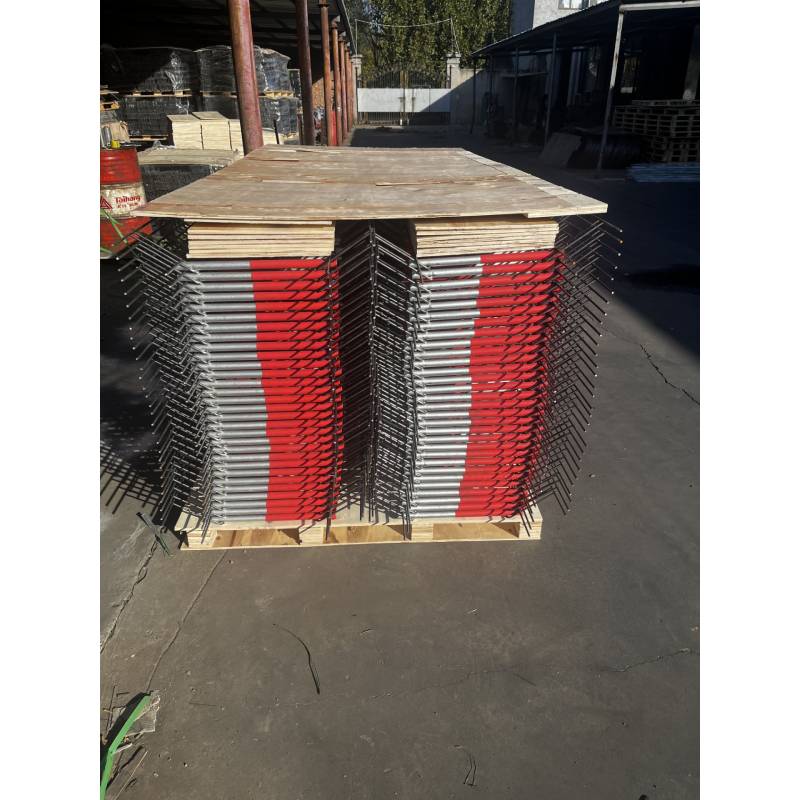
- Mobile Phone
- +8613931874955
- sales@cntcmetal.com
wavy tail wall ties
Understanding Wavy Tail Wall Ties A Comprehensive Guide
In the realm of construction and masonry, the fundamentals of structural integrity are underpinned by various components, and one such crucial element is the wall tie. Among the diverse range of wall ties, the wavy tail wall tie stands out for its unique design and functional advantages. This article aims to delve into the significance, features, and applications of wavy tail wall ties in modern construction.
What are Wall Ties?
Wall ties are essential components used to connect two leaves of cavity walls, ensuring stability and structural integrity. They play a pivotal role in maintaining the alignment of walls and providing resistance against lateral movements, which can be caused by wind pressures, thermal expansion, or other environmental factors. Typically made from metals like stainless steel or galvanized steel, wall ties need to meet specific building regulations to ensure safety and performance.
The Design of Wavy Tail Wall Ties
Wavy tail wall ties are characterized by their distinctive wavy, or undulating, tail design. This innovative design offers enhanced flexibility compared to traditional straight wall ties. The wavy structure allows for better accommodation of differential movement between the two leaves of a cavity wall, which is especially beneficial in buildings where thermal expansion and contraction might occur.
The wavy tail also increases the surface area of the tie, which can enhance the bonding capacity with the mortar, leading to improved performance in terms of load distribution. Additionally, the design helps in reducing the likelihood of moisture penetration, a common concern in cavity wall constructions. The effective drainage capacity afforded by this design ensures that water does not accumulate within the cavity, thereby protecting the integrity of the building.
Advantages of Wavy Tail Wall Ties
wavy tail wall ties

1. Flexibility and Movement Accommodation One of the primary advantages of wavy tail wall ties is their ability to accommodate movement. The wavy design allows for a certain degree of flexibility, which is essential in areas prone to ground movement or where heating and cooling cycles can cause expansion and contraction.
2. Enhanced Bonding The increased surface area provided by the wavy tail allows for a more robust anchoring system within the mortar bed. This feature significantly enhances the bonding capacity between the wall ties and the masonry units, promoting a more stable structure.
3. Moisture Management Wavy tail wall ties are designed with moisture management in mind. By facilitating better drainage through their unique shape, these ties help prevent water buildup, reducing the risk of dampness and associated issues such as mold growth and structural corrosion.
4. Improved Load Distribution Thanks to their design, wavy tail wall ties are effective in distributing loads more evenly across the wall structure. This quality is particularly important in multi-story buildings, where the weight of the upper floors exerts considerable pressure on the lower levels.
5. Durability Typically manufactured from corrosion-resistant materials, wavy tail wall ties offer long-lasting performance, contributing to the overall longevity of the building.
Applications of Wavy Tail Wall Ties
Wavy tail wall ties are versatile and can be used in various construction scenarios. They are particularly well-suited for residential homes, commercial buildings, and public infrastructure. Any structure that utilizes cavity walls can benefit from the installation of these ties, especially those located in areas with variable climates or seismic activity.
In conclusion, wavy tail wall ties represent a significant advancement in wall tie design, offering numerous benefits that enhance the efficiency and safety of cavity wall constructions. With their ability to accommodate movement, enhance bonding, manage moisture, and distribute loads effectively, these ties are an integral part of modern masonry practices. As our understanding of building materials and methods evolves, wavy tail wall ties will likely become an increasingly popular choice among architects, engineers, and builders striving for quality and durability in their constructions.
share:
-
Your Source for Concrete Wall Ties and Masonry AccessoriesNewsJul.10,2025
-
Unlocking the Power of Iron Wire for Every ProjectNewsJul.10,2025
-
Explore Advanced Chain Wire and Stainless Steel Mesh FencingNewsJul.10,2025
-
Discover the Benefits of Annealed Wire ProductsNewsJul.10,2025
-
Discover China Stainless Steel Wire Mesh SolutionsNewsJul.10,2025
-
Build with Confidence Using High-Performance Masonry AccessoriesNewsJul.10,2025
-
Why Sacrificial Formwork Is Redefining Underground ConstructionNewsJun.06,2025



















